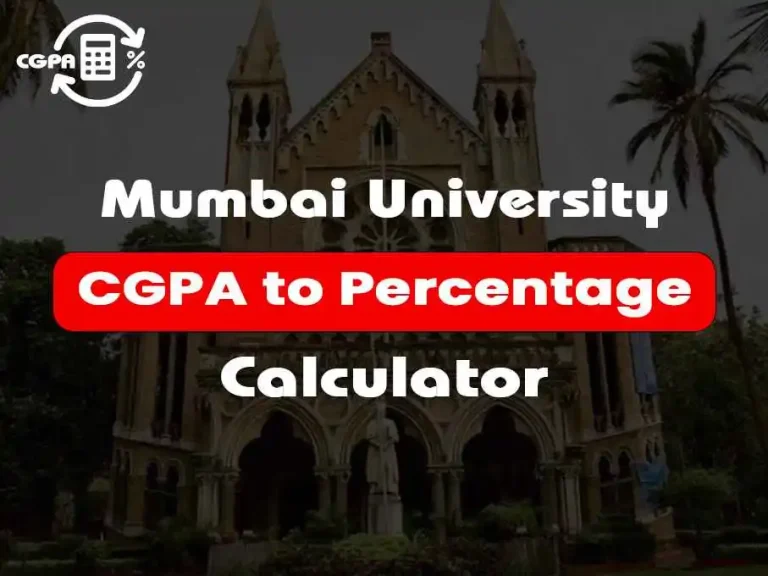Education is the foundation of personal and national growth, and grading systems are integral to assessing student performance. This article delves into the grading systems of five prominent subcontinent countries: India, Pakistan, Bangladesh, Sri Lanka, and Nepal. We’ll explore their unique grading methods, historical context, and how grades are calculated.

History and Evolution of Grading Systems
Grading systems have evolved significantly over the years. Initially, students were assessed based on oral exams and written tests without standardized grades. With the establishment of formal education systems, countries adopted percentage-based grading to provide a more objective assessment. Over time, this evolved into more sophisticated systems like GPA and CGPA, allowing for nuanced evaluations of student performance.
Our Tools

List of Tools
Grading System in India
India’s educational grading system varies across different boards and universities, but the most commonly used systems are the Percentage System and the Cumulative Grade Point Average (CGPA).
Percentage System
| Percentage | Grade | Description |
|---|---|---|
| 90-100% | A+ | Outstanding |
| 75-89% | A | Excellent |
| 60-74% | B | Good |
| 50-59% | C | Average |
| <50% | F | Fail |
Cumulative Grade Point Average (CGPA)
| CGPA | Grade | Description |
|---|---|---|
| 10 | A1 | Outstanding |
| 9-9.9 | A2 | Excellent |
| 8-8.9 | B1 | Very Good |
| 7-7.9 | B2 | Good |
| 6-6.9 | C1 | Fair |
| 5-5.9 | C2 | Average |
| 4-4.9 | D | Pass |
| <4 | E | Fail |
How to Calculate CGPA in India
CGPA is calculated by taking the average of grade points obtained in all subjects. For example, if a student scores grade points of 9, 8, 10, 7, and 8 in five subjects, their CGPA would be:
CGPA = 9+8+10+7+8 / 5 = 8.4
Grading System in Bangladesh
Bangladesh has a grading system that includes both percentage and GPA scales, particularly for secondary and higher secondary education.
Percentage System
| Percentage | Grade | Description |
|---|---|---|
| 80-100% | A+ | Outstanding |
| 70-79% | A | Excellent |
| 60-69% | A- | Very Good |
| 50-59% | B | Good |
| 40-49% | C | Average |
| 33-39% | D | Pass |
| <33% | F | Fail |
Grade Point Average (GPA)
| GPA | Grade | Description |
|---|---|---|
| 5.0 | A+ | Outstanding |
| 4.0-4.9 | A | Excellent |
| 3.5-3.9 | A- | Very Good |
| 3.0-3.4 | B | Good |
| 2.0-2.9 | C | Average |
| 1.0-1.9 | D | Pass |
| <1.0 | F | Fail |
How to Calculate GPA in Bangladesh
GPA is calculated similarly by averaging the grade points. For example, if a student scores 5.0, 4.5, 4.0, 3.5, and 4.0, the GPA would be:
GPA = 5.0+4.5+4.0+3.5+4.0 / 5 = 4.2
Grading System in Pakistan
Pakistan employs a similar grading system to India, with a mix of percentage and GPA methods.
Percentage System
| Percentage | Grade | Description |
|---|---|---|
| 85-100% | A+ | Outstanding |
| 70-84% | A | Excellent |
| 60-69% | B | Good |
| 50-59% | C | Average |
| <50% | F | Fail |
Grade Point Average (GPA)
| GPA | Grade | Description |
|---|---|---|
| 4.0 | A+ | Outstanding |
| 3.7 | A | Excellent |
| 3.3 | B+ | Very Good |
| 3.0 | B | Good |
| 2.7 | C+ | Fair |
| 2.0 | C | Average |
| <2.0 | F | Fail |
How to Calculate GPA in Pakistan
GPA is calculated by averaging the grade points for all courses taken. For example, if a student scores 4.0, 3.7, 3.3, 3.0, and 2.7, the GPA would be:
GPA = 4.0+3.7+3.3+3.0+2.7 / 5 = 3.34
Grading System in Sri Lanka
Sri Lanka uses both percentage and GPA systems, with unique grade point allocations.
Percentage System
| Percentage | Grade | Description |
|---|---|---|
| 75-100% | A | Excellent |
| 65-74% | B | Very Good |
| 55-64% | C | Good |
| 45-54% | S | Satisfactory |
| <45% | F | Fail |
Grade Point Average (GPA)
| GPA | Grade | Description |
|---|---|---|
| 4.0 | A+ | Outstanding |
| 3.7 | A | Excellent |
| 3.3 | B+ | Very Good |
| 3.0 | B | Good |
| 2.7 | C+ | Fair |
| 2.0 | C | Average |
| <2.0 | F | Fail |
How to Calculate GPA in Sri Lanka
The GPA is calculated by taking the average of the grade points. For example, with scores of 4.0, 3.7, 3.3, 3.0, and 2.7, the GPA would be:
GPA = 4.0+3.7+3.3+3.0+2.7 / 5 = 3.34
Grading System in Nepal
Nepal has adopted a standardized grading system in recent years, moving towards both percentage and GPA evaluations.
Percentage System
| Percentage | Grade | Description |
|---|---|---|
| 80-100% | A+ | Excellent |
| 70-79% | A | Very Good |
| 60-69% | B | Good |
| 50-59% | C | Satisfactory |
| 40-49% | D | Pass |
| <40% | E | Fail |
Grade Point Average (GPA)
| GPA | Grade | Description |
|---|---|---|
| 4.0 | A+ | Excellent |
| 3.6-3.9 | A | Very Good |
| 3.2-3.5 | B+ | Good |
| 2.8-3.1 | B | Above Average |
| 2.4-2.7 | C+ | Satisfactory |
| 2.0-2.3 | C | Pass |
| <2.0 | F | Fail |
How to Calculate GPA in Nepal
The GPA is determined by averaging the grade points. For example, with grades of 4.0, 3.8, 3.5, 3.2, and 3.0, the GPA would be:
GPA = 4.0+3.8+3.5+3.2+3.0 / 5 = 3.5
Conclusion
Grading systems across the subcontinent are diverse yet share common elements aimed at accurately evaluating student performance. Understanding these systems not only helps in comparing educational standards but also assists students and educators in navigating the academic landscape. Whether you’re studying in India, Pakistan, Bangladesh, Sri Lanka, or Nepal, knowing your grading system is key to academic success.


![Anna University CGPA Calculator & CGPA to Percentage Converter [Official Tool + Formula] 3 Anna University CGPA Calculator & CGPA to Percentage Converter [Official Tool + Formula]](https://cgpatopercentagetool.com/wp-content/uploads/2025/06/Anna-University-CGPA-Calculator-768x1152.webp)



